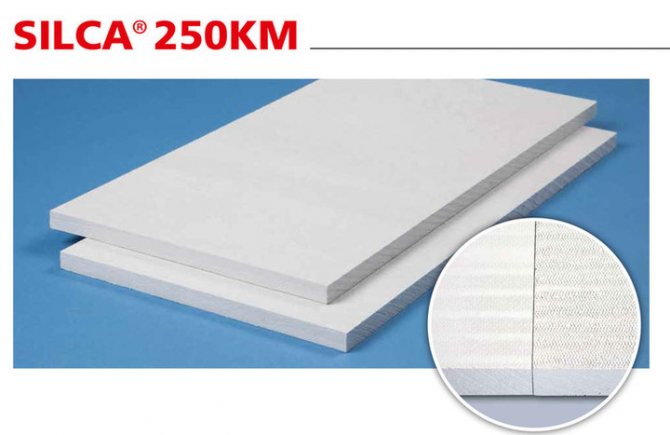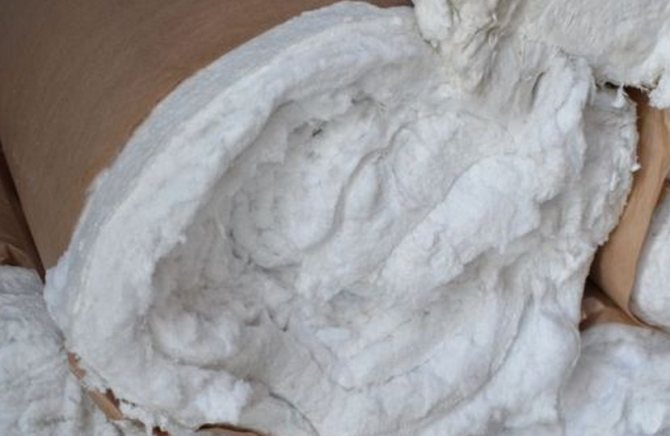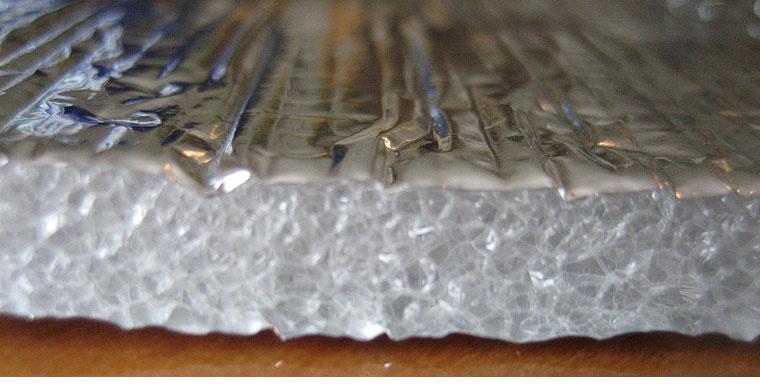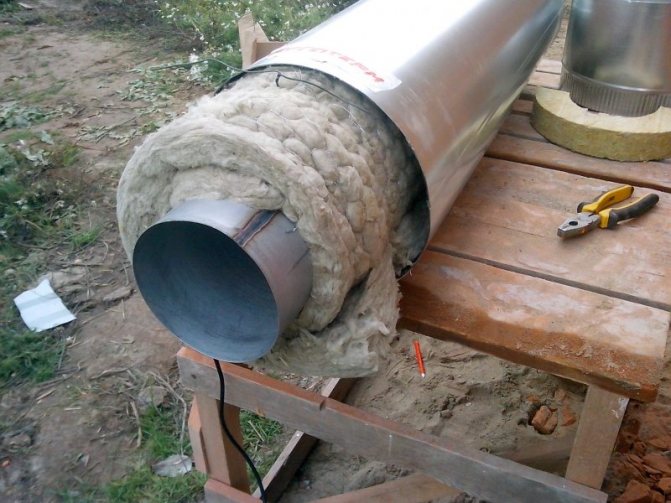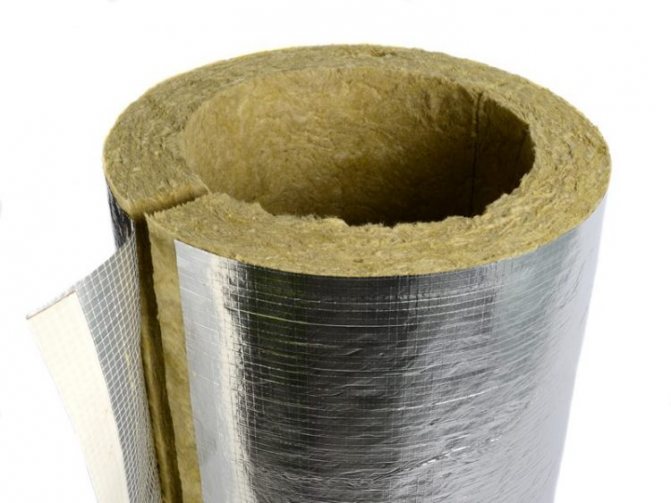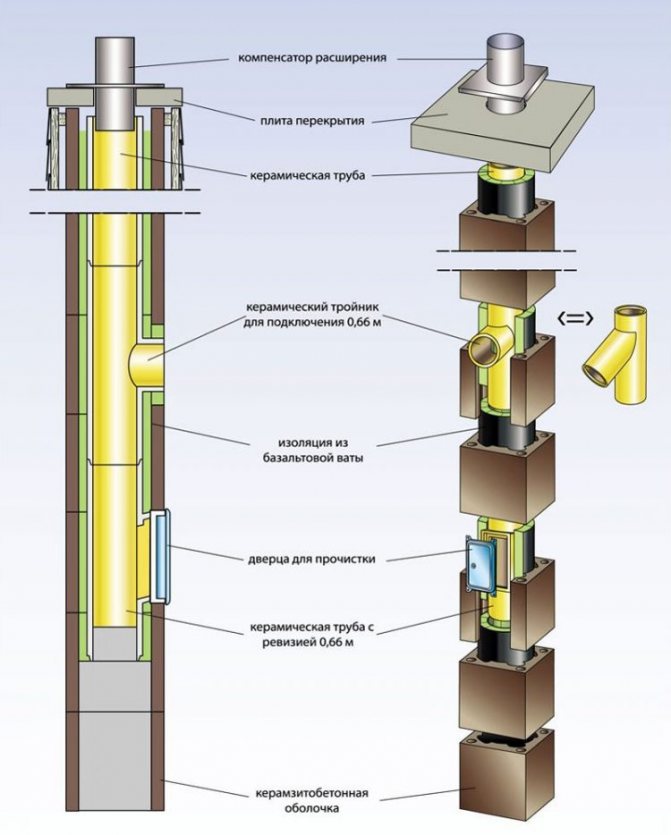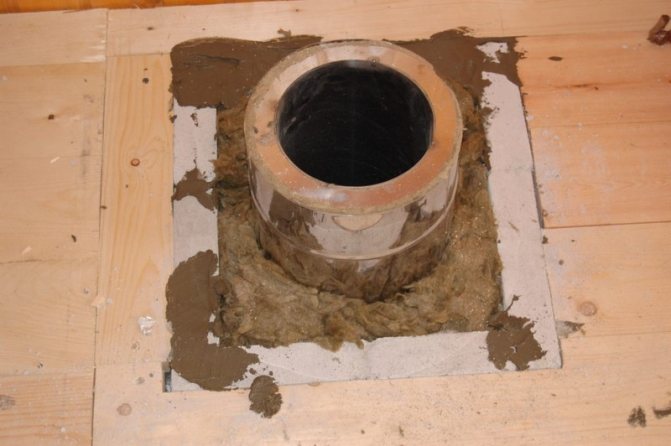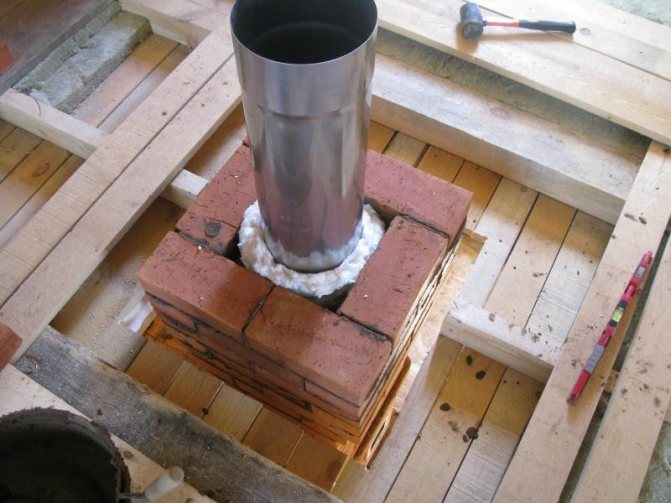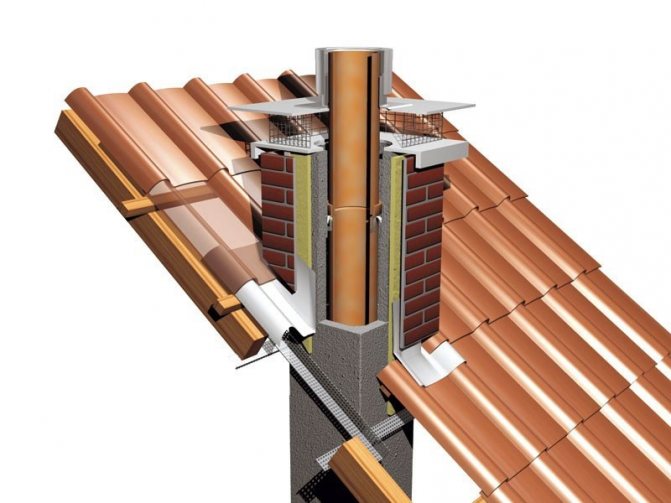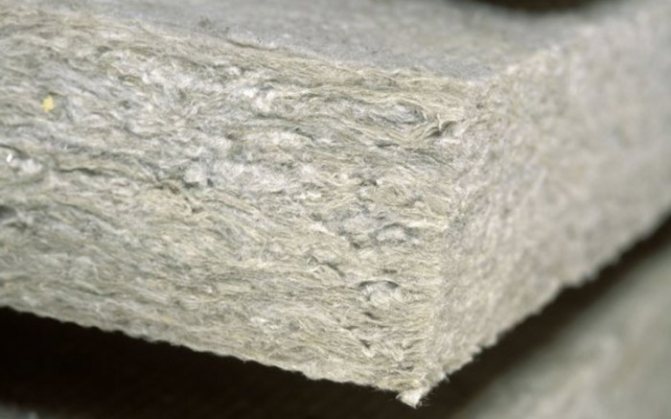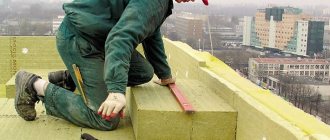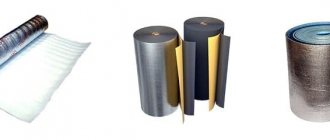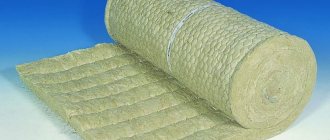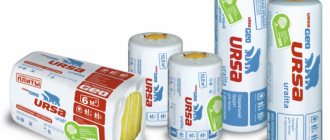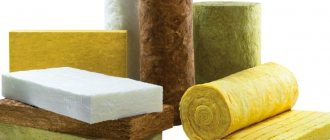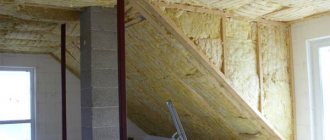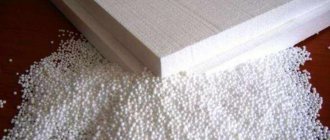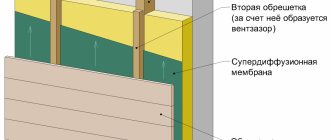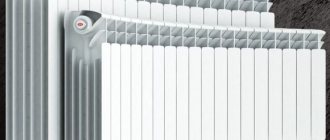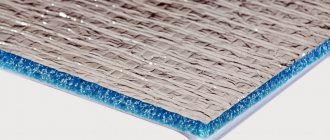Materials for thermal insulation of fireplaces
Special heat insulation for fireplaces is used to minimize heat loss in all parts of the fireplace: the chimney, the stove and the firebox itself. This allows you to increase the efficiency of heating equipment. Thermal insulation of different parts of the fireplace has the following goals:
- Keeps the chimney from the destructive effect of condensate that forms during a sharp change in temperature. The aggressive effect of condensation is due to the content of moisture, various acids formed during combustion and carbon dioxide.
- In the place where the pipe passes through the ceiling, special care should be taken to comply with fire safety standards. If wood building materials are used, special care should be taken to protect the ceiling surface.
- The high-temperature thermal insulation of fireplaces is used to create a directed flow of heat energy to heat the people sitting in front of it. For these purposes, infrared reflectors are used, which are installed in the firebox itself.
- Protection of wall structures with a heat-shielding layer. Otherwise, the brick wall can quickly deteriorate from a sharp temperature drop, and the wooden one can catch fire.
Building materials used for thermal insulation of a fireplace are represented by the following groups:
- containing stone fibers (Rockwool, TEXHO T80, PAROC FPS 17) - they are produced in the form of slabs and have a foil coating on one of their sides, which allows them to withstand temperatures of several thousand degrees;
- based on silica, obtained from quartz sand and alumina, they are produced in the form of flexible slabs;
- Superizol - made using calcium silicate and has good thermal insulation qualities, suitable for insulating fireplace casings and their chimneys, fastened with glue or self-tapping screws;
- Vermiculite - presented in the form of plates (Scamol, Thermax), consists of compressed grains of the substance, has rigidity, is well sawn, has a surface suitable for finishing;
- Super Strength - a fabric made of silica with a layer of foil, has a high cost;
- gypsum fiber - obtained by mixing and pressing gypsum and cellulose, it is suitable only for insulating an array of fireplaces, floors and walls, does not bear loads and deforms.
When choosing materials, it is important to make sure they are environmentally friendly so that they do not release toxic substances into the environment when heated.
What is insulation for?
Insulation for the chimney does not allow the pipe to freeze, especially at subzero temperatures. It also prevents:
- The destruction of the pipe over time. Combustion and decomposition products negatively affect any, even the most durable and reliable materials. The presence of insulation and the correct structure of the pipe, allows you to avoid malfunctions and deterioration of traction;
- Prevents the possibility that the boiler will fail;
- Avoids icing. During the use of the stove structure, condensation regularly forms in the chimney, whereby dampness arises, which directly affects the state of the structure.
In order to familiarize yourself with the proven and best materials in more detail and carry out this procedure on your own, we suggest that you familiarize yourself with the photos located in this article.
- The selected material should not be thinner than 5 centimeters;
- When winding, it is necessary to leave a small overlap, which at the next stage is fixed with a special wire;
- The outer layer usually consists of special foil or sheet metal;
- The pipe must be reliably protected from above with a special cap and must not have crevices.
https://www.youtube.com/watch?v=UjXi6X-moxE
The price of insulation directly depends on the type, quantity, quality of the selected material and the manufacturer.
Is it possible to use basalt insulation for a chimney
Basalt, used in the manufacture of chimneys, is one of the types of mineral insulation. Another name for the material is stone wool. Thermal insulation is made from gabbro-basalt rock waste. During the production process, the rock is crushed and melted, stretched into thin fiberglass.
The melting temperature in the furnace is 1500 ° C. The thickness of the pulled fibers is not more than 7 microns, the length is 5 cm. The resulting threads are passed twice through a press, preheated to 300 ° C. The resulting thermal insulation is distinguished by fire resistance, environmental friendliness, strength and other characteristics. It is not surprising that the largest manufacturers use fire retardant basalt insulation for chimneys.
Thermal insulation of the chimney with basalt wool, given the characteristics of the material, is quite justified. During the production process, the material acquires the following advantages:
- Low thermal conductivity - depending on the brand, the thermal insulation value of the material ranges from 0.032 to 0.048 watts per meter per Kelvin. Foamed rubber, expanded polystyrene, cork have the same characteristics.
- Hydrophobic - moisture settles on the surface and cannot get inside. Even in damp rooms or under the influence of atmospheric precipitation, stone wool retains its operational and thermal insulation characteristics. Therefore, the choice of basalt wool for insulation of a chimney installed outdoors is a really good solution.
- Fire resistance - basalt wool, without loss of strength, heats up to a temperature of 1114 ° C. At a higher temperature, the material begins to melt. This ability allows you to withstand even direct exposure to open fire. The temperature of the chimney, even when soot is ignited, does not exceed 1000 ° C, therefore basalt is suitable for insulating any smoke evacuation systems, regardless of the principle of operation and the type of fuel used.
- Strength and resistance to subsidence - stone wool fibers are located both vertically and horizontally, which leads to the ability to withstand compressive loads from 5 to 80 kilopascals. During the entire service life, the material does not change its shape. Deformation is allowed no more than 10%.
Basalt wool for insulating chimney pipes is recommended for use in the manufacture of fire-prevention cuts, installation in wet rooms, as well as outdoor decoration.
The characteristics of basalt fiber made it possible to significantly expand the scope of application, in comparison with conventional mineral insulation. In chimney systems, stone wool is used for the following purposes:
- Sandwich pipes - insulation of a steel chimney with basalt wool is carried out at the factory, which ensures high thermal performance and the absence of cold bridges. The construction of a sandwich pipe is distinguished by its light weight, heat resistance and good thermal performance.
- Ceramic pipes with a stainless steel outer sheath - 3-4 mm thick basalt wool cylinders are inserted into the structure. The absence of seams increases the already high thermal insulation characteristics. Ceramics installed in expanded clay concrete blocks are insulated during installation. You can wrap the chimney pipe with insulation with a thickness of 30/40/50 mm. Fix the cotton wool with clamps.
- Insulation of pipes of a single-wall steel chimney with basalt wool.For these purposes, it is recommended to use foil-clad basalt for the chimney. Foil stone wool reduces heat loss and protects the pipe from external influences of atmospheric precipitation.
- Insulation in penetrations - roof cutting for the chimney, as well as the passage in the floor slabs, according to the requirements of PB and SNiP, is insulated with non-combustible material. The gaps between pipes and structures are filled with stone wool. Fireproof foil-clad basalt insulation for chimneys is also used for the manufacture of fire-prevention cutting, protecting wooden elements of the building with it, located in the immediate vicinity of heating surfaces.
- Insulation of the chimney box - in order to prevent the appearance of oxides on brick channels, it is required to insulate the walls. For this purpose, rigid basalt slabs are optimal, which subsequently make it possible to finish under plastering, laying ceramic tiles, etc.
Basalt is intended for thermal insulation of chimney pipes located inside and outside the building, for the manufacture of fire breaks and chimney passage nodes through structures.
Why insulate the oven
In the furnace structure, the following is subject to insulation:
- Chimney.
Chimney insulation is important for several reasons:
- Insulation can prevent the chimney from quickly cooling down, as a result of which the heat in your house will remain for a longer time.
- A layer of insulation prevents heating of household structures.
- Condensate accumulates in non-insulated pipelines, which is not just damp, but a very aggressive substance. The fact is that during the combustion process moisture and acids are released from the fuel, which mix and settle on the walls of the pipeline, leading to the slow destruction of not only the heating system, but also the structural elements of the building.
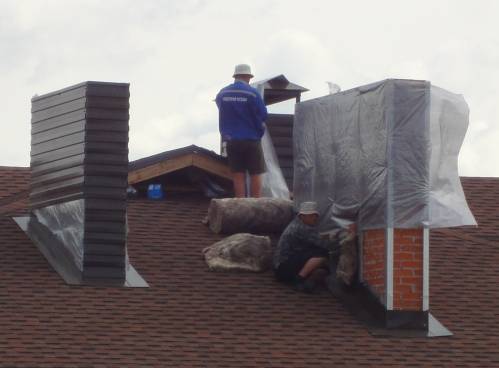
Do-it-yourself chimney insulation.
- Those walls of the stove that are located in the immediate vicinity of the wall of the house. Thermal insulation of the wall from the stove is also a very important process, since the heat of the stove leads to cracking of the brick walls and their subsequent destruction. In block or wooden houses, the stove must also be insulated from the walls by installing insulation.
Fireproof wall cladding
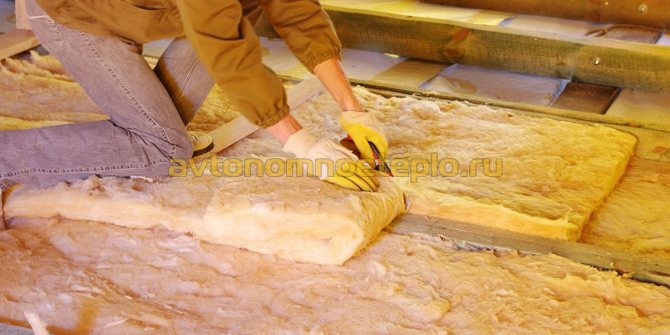

To prevent spontaneous combustion of the walls adjacent to the furnaces, it is required to install special sheathing made of non-combustible materials with thermal insulation properties.
Thermal insulation for furnaces in this case is carried out in two ways:
- For cladding, materials are used that have reflective properties and are resistant to high temperatures.
- The heat-insulating oven sheathing is covered with heat-resistant tile cladding.
Good reflective qualities are shown by metal sheets covering non-combustible thermal insulation sheets. It is best to use stainless steel, since galvanized steel emits toxic substances when heated.
It is recommended to polish the outer surface of the metal sheets, as this promotes better heat energy reflection.
The following materials are used as thermal insulation:
- basalt cardboard;
- basalt wool;
- minerite;
- asbestos cardboard.
In accordance with SNiP 41-01-2003, the cladding is installed in the following sequence:
- Installation of insulation with a ventilation gap of 2 to 3 cm.The thickness of the insulating material is no more than 2 cm and no less than 1 cm.
- Installation of a metal sheet.
- Maintain a distance between the oven and the casing of at least 38 cm.
Ceramic bushings are used for fastening materials to the wall: they allow you to maintain the required gap and are resistant to fire.If it is not possible to maintain the specified distance between the furnace and the casing, then two layers of heat-insulating sheets should be used. For example, two sheets of minerite are attached using ceramic bushings. The distance between them is 2-3 cm. The outer sheet is covered with stainless steel.
We offer you to familiarize yourself with the Sauna stoves with your own hands - step by step instructions!
The design of a room or bath does not always allow installing metal cladding. Often it will not fit into the interior of the room. In this case, you can resort to cladding with a facing of heat-resistant tiles, which is attached with a special glue that is resistant to high temperatures. We list suitable materials for cladding:
- terracotta tiles;
- porcelain stoneware;
- tiles;
- clinker tiles;
- talcochlorite.
During installation, they are guided by the following rules:
- The ventilation gap between the wall and the refractory sheet should be 2-3 cm.
- Refractory tiles are attached to the installed sheet using special adhesive mixtures.
- The oven should be located no closer than 15 cm from the tile surface.
The following are suitable as sheet refractory materials for cladding with cladding:
- minerite;
- refractory gypsum board containing fiberglass;
- glass-magnesium sheet.
The cladding will help not only to beat the design of the room and maintain a uniform style, but also to reduce the permissible distance between the stove and the wall.
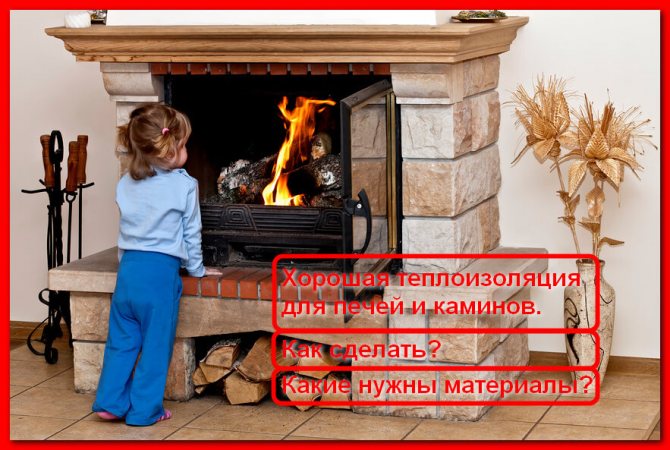

Thermal insulation of the furnace using stainless steel sheathing has several options. By orientation in space, frontal and side screens are distinguished. The recommended distance from the stove to the screen is from 1 to 5 cm. Thanks to such structures, it is possible to achieve a reduction in the intensity of the thermal radiation of a metal stove, since the outer surface of the protective screens heats up to 1000 C.
If the walls of the boiler room are wooden, then they need preliminary treatment with fire retardants. The wall behind the boiler must be sheathed with sheet metal. The rest of the area is finished with sheets of plasterboard or magnesium glass. Then the surface is plastered or covered with ceramic tiles.
Step-by-step instruction
The first structure is insulated in the following cases:
- reduction of heat consumption - thermal insulation work is carried out with the wrong design of the fireplace or stove, when all the heat comes out through the chimney (due to excessive draft or the use of materials with high heat transfer);
- insulation retains heat;
- elimination of condensation: if the pipe is not insulated, condensate collects in it, it destroys the laying of the pipe or the joints of the welded coating.
Experts recommend insulating the surface of the stove, located near the walls of the house. Otherwise, due to temperature fluctuations, cracking of the brick will occur. Thermal insulation between the wall and the stove is carried out using the following materials:
- asbestos slabs;
- thermofoils (as a heat reflector).
The considered method is used if the space between the stove and the wall exceeds 5 mm. If the distance is small, then asbestos cannot be used (due to the composition of the material).
Thermal insulation works can be performed using the following technology:
- strengthening the wall using a metal sheet suspension;
- installation of plates of ceramic or asbestos insulation material;
- filling gaps and seams with mineral wool;
- winding the pipe with an external reflector (foil).
Since mineral wool does not tolerate the formation of condensation, a special material should be used to insulate this seal. A similar technology is used for oven insulation. In this case, the wall does not heat up and does not heat up.
Materials for thermal insulation of fireplaces
The choice of a brand of basalt wool depends on the desired thermal performance.The material is selected depending on the features of operation, the type of chimney design. You will also have to decide on the appropriate insulation for the manufacture of roofing cuts and nodes of passage through the wall, and floor slabs.
Heat-insulating basalt chimney shells are used in industrial and domestic smoke evacuation systems. By wall thickness, they are subdivided into several grades: 55, 75, 90, 110, 150, 200. The shells are supplied in lengths of 1 meter each.
When installing pressed basalt cylindrical insulation, they are guided by the requirements set out in SNiP 2.04.14-88, and specifically, by the following instructions:
- The cylinders have a longitudinal seam for easy installation on pipes. The insulation is fixed with bands made of thin sheet galvanized or stainless steel, with a thickness of at least 0.8 mm. Alternatively, stainless steel or black steel knitting wires are used, with diameters of 1.2 and 2 mm, respectively.
- Non-combustible basalt heat-insulating elements of the cylinders are installed at intervals along the seams. The joints are insulated with aluminum tape.
- Installation work starts from the flange. Foil insulation does not need a protective coating. In other cases, a casing or metal casing is made for insulation.
The use of basalt insulation in the chimneys of a sandwich system, in the form of heat-insulating cylinders, is limited to pipes with a flue gas temperature of no more than 300 ° C.
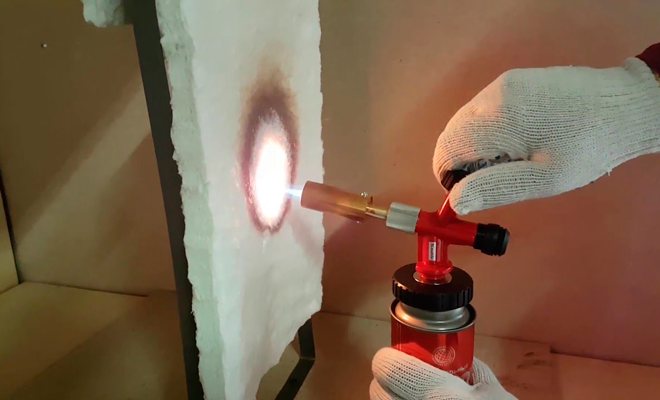

Basalt mats are used to insulate heated surfaces at temperatures from 450-700 ° C. Operation methods are regulated by GOST-16381. Insulation is selected according to the following parameters:
- Density.
- The type of cladding.
- One or two-sided material stitching.
- Operating temperature limit.
First of all, you need to pay attention to the declared density of basalt wool. For connection to solid fuel units, stone wool with a coefficient of 30-125 kg / m³ is suitable. The material does not have a covering layer and is able to withstand a constant working temperature of 700 ° C.
Non-combustible basalt insulation of high density, used in the manufacture of nodes of passage, as well as insulation of chimneys of any design.
For external and internal insulation of single-wall pipes, a basalt mat with foil is used. When installed inside a building, there is no need for a protective sheathing. The foil layer is connected to the insulation by means of stitching.
It is not recommended to use stitched mats for the wall passage of the chimney. It is possible to install mats for insulating ceilings at the place of passage of chimneys, making fire-fighting cuts.
One of the novelties on the market of heat-insulating materials is basalt fiber board. The main characteristics of basalt cardboard:
- With a small thickness, it has a high density and is able to withstand temperatures up to 900 ° C.
- It is used as refractory coatings during the installation of wood and solid fuel stoves, boilers.
- Resistant to vibration and moisture.
- Service life is not less than 50 years.
- Basalt cardboard thickness: 5/10/14/19 mm.
- The creation of multilayer structures is allowed to increase the thermal insulation properties.
It is quite simple to insulate a metal chimney by wrapping it in basalt foil cardboard. The material bends well around the circumference. After wrapping the pipe, the insulation is fixed with clamps.
It is allowed to insulate the chimney with foil-clad basalt cardboard for all types of flue systems. After installation, there is no need to make an additional protective structure.
A basalt shield is installed as a fire cut, protecting the wooden walls adjacent to the heating pipe.


Various manufacturers, the consumer are offered more than several dozen names of basalt heaters.Some are manufactured abroad, others at domestic enterprises.
Judging by customer reviews, the products of the following companies are popular:
- Basalt wool Rockwool is produced at the enterprises of the company of the same name, located in Denmark. According to its characteristics: hydrophobicity, sound and thermal insulation, as well as mechanical strength, Rockwool significantly outstrips analogues of other manufacturers. Basalt wool Rockwool is used by manufacturing companies for insulating finished ceramic chimneys Schiedel, Effe2 and others.
- Basalt wool URSA - originally made in Italy. Today the company has 14 large production centers located in Europe, the Middle East and Asia, which, as a result, could not but affect the quality of the products. The URSA company specializes in the insulation of industrial and domestic premises, and is popular due to its good price-quality ratio of its products.
- Izovat basalt wool is a heater made in the near abroad, in Ukraine. The product range includes mineral slabs with a density of 30 to 200 kg / m³. It is worth paying attention to a brand intended for insulating brick chimney ducts with subsequent plastering of the surface. The thickness of Izovat boards is from 30 to 200 mm.
- Paroc basalt wool is a Swedish company specializing in the production of stone wool since the 30s of the last century. Paroc production workshops are located exclusively in the EU countries, which allows maintaining a high level of quality and full compliance with safety standards in force in Europe. Paroc basalt cylinders can be used to insulate iron chimney pipes. To this end, the company has developed the Paroc Pro Section and Paroc Pro Bend cover layers, which provide maximum thermal insulation and protection for steel structures.
When choosing basalt for pipe insulation, it is mainly necessary to focus on the heat engineering characteristics specified by the manufacturer. On the basis of large concerns, modifications have been developed specifically for smoke extraction systems.
For the insulation of fireplaces, highly specialized stone wool materials in the form of slabs, for example, are most often used. Fire Batts (Rockwool), price 1 pack (8 pieces with dimensions 1000 x 600 xx 30 mm) - from 2760 rubles; PS17 (Ragos), price 1 pack. (7 pcs. 1200 x 600 x x 30 mm) - 1930 rubles; "TECHNO T 80" ("Techn-noNIKOL"), price of 1 unit. (6 pcs.
special heat-resistant glue. The foil layer increases the thermal insulation properties of the structure by reflecting radiant heat.
If you choose the right material, when arranging the fireplace area, follow the recommendations of the manufacturers of fireplaces and insulation materials, and during operation adhere to elementary safety measures (do not leave a working fireplace unattended, do not place flammable objects next to it), then you will enjoy the warmth of living things for a long time and safe fire.
We suggest that you familiarize yourself with How to paint a rustic stove
Reference by topic: How to fold the fireplace stove (orders)
- Chamber cooling hole
- Decompression chamber
- Ventilation grill
- High Temperature Stone Wool Slabs
- Plasterboard box
- Chimney
- Firebox body
Installation of Fire Batts plates when installing a fireplace - photo
First, the required number of heat-insulating plates is prepared, and their size must correspond to the dimensions of the fireplace insert (a). Heat-resistant mineral glue on a cement basis is dotted on the plates, if the insulation is foil, then on its non-foil surface (6). Then the plates are glued to the wall (c). The joints of foil insulation are protected with heat-resistant aluminum tape (g).
A fireplace insert with a decorative portal is installed in the place prepared in this way, leaving an air gap of at least 4 cm (d) between the latter and the insulation layer. After that, metal guides are mounted above the decorative portal and thermal insulation plates are also installed between them (e)
Gas boiler pipe insulation
In order to choose a heater for the chimney of a gas boiler, it is necessary to choose and use no less high-quality, non-combustible materials. The most common option is to use sandwich pipes. The design of which consists of two pipes with different diameters. This is necessary in order for a product with a large cross-section to enter the second, and thereby form an additional protective layer.
How to insulate a metal chimney pipe - materials and guidance:
- Small holes must be made on the roof slab. Their cross-section should exceed the diameter of the chimney by about 25-30 centimeters;
- We produce insulation using basalt wool. There should be no gaps after winding;
- We additionally fix the insulation with wire;
- Large pipe casing, must be fixed with tapes and ties;
- The metal sheet located near the riser must also be insulated with asbestos, expanded clay or clay.
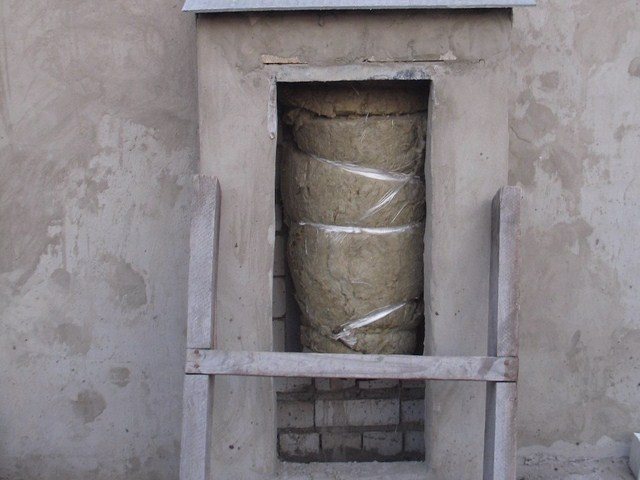

Chimney insulation with mineral wool
Chimney insulation with mineral wool
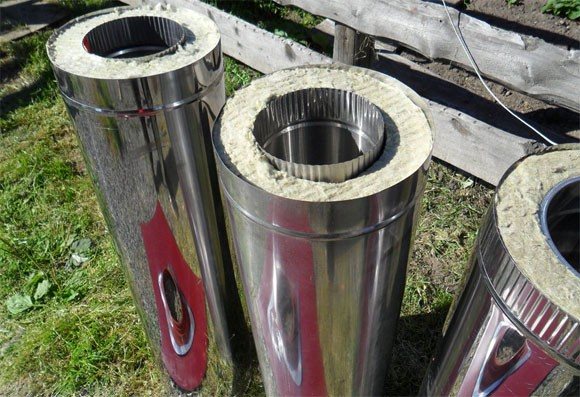

Non-combustible chimney insulation
Non-combustible chimney insulation
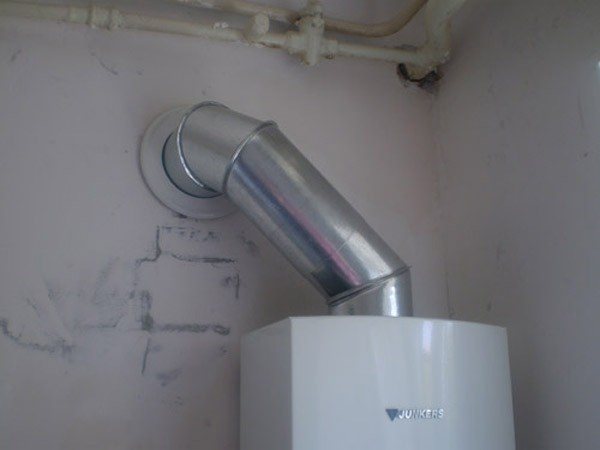

Insulation of the chimney of a gas boiler
Insulation of the chimney of a gas boiler
One of the most important elements of any stove and fireplace is the chimney, which you learned from this article, how to insulate. By following the instructions and recommendations, you can do all the work on your own, with minimal time and money.
Before insulating an external chimney, it is necessary to select the most suitable material and calculate its exact amount.
Winding instruction and materials:
- The simplest option is to use a special solution. As a sweep, special powders are used, which must be diluted in a certain proportion with water;
- You can buy the mixture at any specialized hardware store;
- Previously, a special glass fiber stack must be fixed to the pipe surface, which will prevent the solution from rolling and spreading.
Protective screens for ovens
The heat-insulating material used for ovens must not only prevent the possibility of fire, but also protect people from too hard infrared radiation. For these purposes, protective screens for fireplaces, as well as for sauna stoves, are the best suited. They can be made both of metal and using bricks or decorative stone.
A feature of fireplace screens is that they are made exclusively of metal, they can be built-in or movable. Such structures prevent sparks and hot coals from entering the room, and also, when heated, contribute to the rapid and uniform heating of the air in the room. A safety fence can be purchased or made by hand. Let us consider in more detail the features of the protective screens of the furnaces.
Along with insulation, the furnace is insulated with bricks. There are two options: construction of a protective wall and brick lining of the furnace. In both cases, the brick is laid with an adhesive mixture or clay. The use of cement slurry is considered an extreme case. When bricking the stove, it is required to provide for a gap of 3 to 10 cm, as well as ventilation holes at the bottom and top to ensure better convection and quick heating of the room.
If it is decided to build a protective wall, then it should be remembered that the masonry has a thickness of half a brick (120 mm), the height of the wall should be slightly higher than the furnace itself.Thanks to such a structure, a uniform and soft heat is created in the bath, which eliminates the need for continuous heating and allows you to steam for several hours.
Types of finishing raw materials
When insulating fireplaces, special materials are used, mainly from stone wool slabs, such as:
- Fire Batts (Rockwool), price for 1 package (8 pcs. 1000x600x30 mm) - about 3 thousand rubles;
- PS17 (Ragos), the price of 1 package (7 pcs. 1200x600x30 mm) - about 2 thousand rubles;
- "TECHNO T 80" ("TechnoNICOL"), the price of 1 package (6 pieces 1200x600x50 mm) - about 3400 rubles.
The main feature of such materials is the operating temperature range, which varies from 170 to 800 degrees. Such plates are ordinary, with a fire resistance index and glued (on a special heat-resistant glue, the temperature threshold of which is 20-30% higher than this threshold at the product itself) to one of the sides reinforced with heat-resistant foil.
If you correctly select the finishing material, when arranging the stove, follow the advice of both the manufacturers of fireplaces and manufacturers of insulating materials, observe the usual precautions and safety during operation (do not leave a functioning fireplace unattended, do not leave flammable products and objects), then you will enjoy the fireplace heat and fire for a long time, without putting your home or yourself at risk.
Features of chimney insulation with basalt wool
In addition to the correct choice of basalt insulation, you need to worry about observing the installation rules. As practice shows, the following norms are especially often violated:
- The thickness of the layer of basalt wool in penetrations through wooden structures is at least 5 cm.The distance from the supporting beams is at least 1 m.
- If you need to lay the material in several layers, correctly lay out the fire-resistant basalt slab with an offset to overlap the joints of the lower sheet with the upper one. The same rule applies to the installation of a cylindrical insulation. The longitudinal seam of each subsequent shell is shifted 180 °.
- The device for the passage of the chimney through a wooden floor using basalt wool provides for the use of fire cutting. To combustible material, from the heating surface must be from 50-100 mm. The gap is filled with stone wool.
- The thickness of the basalt fiber in the chimney should be no more than 40 mm, for external insulation, up to 100 mm. The density is selected depending on the operating conditions. For insulation of ceramic chimneys connected to solid fuel boilers, basalt wool with a density of 100 to 200 kg / m³ is used.
- It makes no sense to use high-temperature basalt wool for thermal insulation of a chimney connected to a gas or oil-fired boiler, since the temperature of the flue gases rarely exceeds 200-300 ° C. Installation of a cylindrical insulation will be optimal.
- Calculation of the required amount of basalt wool for insulating a steel chimney. The required material thickness is selected. On the packaging of the insulation, the approximate consumption of cotton wool is indicated for different layer thicknesses. It remains to calculate the dimensions of the circle in centimeters and the length of the pipe. After that, the number of packages is calculated.
- After insulating a single-layer pipe with non-foil-clad material, it is imperative to manufacture a protective structure.
In some hardware stores, I can cut packages with basalt insulation in two, or sell mats individually. This allows you to purchase the exact amount of material and avoid overpayments.
The main disadvantage of basalt insulation is its cost. Otherwise, in comparison with any other types of thermal insulation, basalt undoubtedly wins. The advantages of the material include:
- Low thermal conductivity - even at an exhaust gas temperature of over 500 ° C, basalt wool heats up no more than 30 ° C. During a short-term ignition of soot and a temperature jump up to 900 ° C, the outer circuit of the sandwich pipe will not heat up more than 45 ° C.
- Non-combustibility - the material can withstand direct fire from a gas burner without igniting. Wool begins to melt after exceeding 1100 ° C. Therefore, you can lay the basalt insulation close to the chimney and not worry about the safety of the room during the entire period of operation.
- Easy installation - mats and sheets can be easily cut with a regular painting knife. The material is fixed with clamps or knitting wire. If you lay basalt wool with your own hands when installing chimneys, you can significantly save on work.
- The specific weight of even basalt refractory wool is 30 kg / m³, respectively, after insulation, the mass of the chimney structure does not increase much.
Basalt wool has no analogues in its characteristics and is the optimal solution when choosing a heater for a chimney. The only thing that limits the popularity of the material is the high cost associated with the peculiarities of the production process.
Products used
For insulation for the chimney, you can use the following materials:
- mineral wool;
- glass wool;
- brick;
- slag slabs or heat-resistant cement mortar.
Chimney insulation depends on the material from which it is made. If the pipe is steel, then construction wool is used. The structure consists of 2 parts (the length does not exceed 1.5 m), which simplifies the compaction of the insulation material. The size of the casing should be 12 cm larger than the pipe diameter.
Pre-put on the first part of the structure. Then the insulation is evenly applied. The second part of the chimney is planted. The structure is insulated. The pipe is installed with a slight slope. The resulting gap is covered with cement mortar.
The steel chimney consists of 2 pipes of different sizes. A protective casing is placed on a pipe with a smaller size (chimney). An insulating layer is laid between the pipes. A pipe with a smaller diameter is placed in a structure with a larger diameter. The gap formed between the pipes is filled with construction wool.
A brick chimney is insulated using the following technology:
- base application;
- installation of a reinforced mesh;
- sealing cavities and cracks with a solution;
- applying plaster in several layers (their thickness should not exceed 5-7 cm);
- complete thermal insulation;
- mineral wool is cut taking into account the size of the chimney;
- fixing the heat insulator with metal tape or wire;
- pipe cladding with ceramic or asbestos plates;
- plastering the surface.
This method of thermal insulation allows:
- reduce heat loss by 2 times;
- seal the chimney;
- prevent the formation of condensation and destruction of the chimney;
- improve quality and safety.
Heat insulation of a stove is a necessary procedure for a high temperature stove used to heat a home.
Basalt insulation brands for chimney insulation
Facing basalt slabs look aesthetically pleasing and provide good fire protection. In addition, this material gives off heat for a long time after heating. It is possible to clad with this material both the brick screen and the wall itself over the insulating sheets.
Fire safety should not be neglected - the consequences of carelessness can be tragic. The modern building materials market allows you to choose an option according to your means and taste, while providing reliable protection against fire.
How to insulate brick pipes
If you do not know how to insulate a brick chimney, we suggest using one of the following options:
- Application of plaster.This option is one of the simplest, fastest, most effective and affordable. The plaster must be applied to the pre-installed reinforcing mesh. In total, it is necessary to apply from 2 to 5 layers, depending on the thickness of the bricks. The total thickness of the plaster must be more than 50 millimeters. After the solution has completely dried, it must be carefully wiped off and applied to the surface 1-2 layers of chalk or lime paint;
- Mineral wool:
- On the inside of the pipe, a crate made of a metal profile is fixed;
- It is necessary to securely fix each guide with dowels;
- Insulation can be purchased both in rolls and tiled. The first option is the most convenient;
- Basalt wool must be fixed between the gratings. In this case, it is necessary to completely eliminate the occurrence of gaps;
- The next layer is to lay the vapor barrier;
- A plaster grid is fixed, on which several layers of plaster are applied, in which cement should be present.
Thus, you can be one of the most convenient and suitable ways to insulate a brick chimney.
Classification
Heat-insulating fibrous materials are mineral non-combustible heaters made of glass, basalt fiber, which can withstand 500 ° C. They are used in specific places:
- for insulating pipelines in the form of cylinders with foil reinforcement;
- thin mats, plates for flashing plastic windows;
- basalt - for wall, roof and floor insulation.
According to GOST, wool is divided into the following categories: stone, glass, slag wool. All types of cotton wool according to the same GOST have a flammability class NG - the oxygen index is at least 30%. Let's consider each of the types in more detail.
Glass wool
Glass wool is made from fiberglass by melting glass and stretching it from the fibers.
This material is very fire resistant, has low hygroscopicity, good sound insulation and low thermal conductivity.
The strength is higher than that of stone wool, but the fibers are still fragile, so it is better to wear gloves and glasses when working with it.
Stone wool
Basalt fiber wool is produced by melting rocks at high temperatures (up to 1500 ° C). The fibers are adhered by the addition of special substances, which gives durability. Basalt wool does not deform, does not react to acid-alkaline environments.
The additives contain phenol-formaldehyde resins that give off harmful fumes. However, evaporation begins only when heated to 700 ° C - i.e. there is no danger under normal conditions.
Slag wool
It is produced by processing slags and obtaining glassy fibers.
Such insulation has a high thermal conductivity and absorbs moisture, reacts to dampness and creates an environment that is aggressive for metals. It has one advantage - low price.
Linen insulation
It is also worth mentioning the novelty of modern production of thermal insulation materials in the form of Hot-Flax linen insulation. It is pure flax (fibers) without mineral wool admixtures, which has a fire retardant treatment and does not support combustion at all.
The oxygen index is 37%, approaching polymeric, self-extinguishing materials.
The stone does not burn
Stone wool is produced from non-combustible raw materials - rocks of the gabbro-basalt group with the addition of a small amount of a binder for shaping, and in high-temperature insulation it is very small (less than 2% by mass).
Thin fibers of this heat-insulating material can withstand temperatures up to 1000 ° C without melting; they are not damaged, remain connected to each other, retain their strength, shape and do not collapse in the absence of mechanical stress on the material.
Products made of stone wool belong to the group of non-combustible building materials (NG according to GOST 302W), which are used both in low-rise cottages and in high-rise buildings. In addition, in the event of a fire, such insulation delays the process of destruction of the building's load-bearing structures for some time.
Since the operation of the fireplace and its chimney is associated with the combustion process and high temperatures, their installation requires an extremely careful and balanced approach. There is SP 7.13130.2013 “Heating, ventilation and air conditioning. Fire Safety Requirements ", which clearly sets out the principles of furnace chimneys, penetrations and insulation installation from the point of view of fire safety. Ignoring these rules can lead to very sad consequences.
Based on our practice, most of the private owners, whose bathhouse or summer cottage burned out, installed a fireplace, stove on their own and violated the rules for conducting a chimney through the ceiling or did not observe the fire distance between the heating equipment and the wall, although this parameter is specified in the installation instructions.
Therefore, we recommend not only purchasing special-purpose insulation, but also seeking advice from specialists who will tell you how to properly equip a fireplace or stove.
Practical advice on thermal insulation of a fireplace
To increase the fire safety of the ceiling that the chimney crosses, equip the decompression chamber by horizontally installing a heat-insulating plate. It is advisable to provide two ventilation grilles in the box: one for cooling the decompression chamber, and through the other warm air will spread throughout the room. Drywall sheets are attached to the metal guides with self-tapping screws. They will become the basis for the decorative finish of the fireplace.
Reference by topic: How and what to make a fireplace with your own hands
Loose
Loose heaters are expanded clay, perlite, vermiculite, which are very resistant to fire and have a flammability class of at least G1 - an oxygen index of at least 30%.
Expanded clay is obtained by firing clay. The granules are heavy, with high thermal conductivity. This non-combustible thermal insulation of a bulk type, therefore, is inconvenient in installation. However, it is cheap and environmentally friendly. Expanded clay is characterized by the size of fractions. So, an option up to 5 mm is sand, an indicator up to 40 mm is gravel. If large fractions are crushed, then crushed stone is obtained.
Thermal and fire-resistant qualities when using expanded clay are significantly increased. This is especially true for hard-to-reach places where such insulation can simply be poured. Expanded vermiculite is used for walls in low-rise buildings. It is resistant to microorganisms, environmentally friendly, but has low moisture resistance.
Perlite
Perlite is presented in the form of volcanic glass granules. The fraction ranges from 1 to 10 mm. Due to its light weight and the ability to adjust the thickness of the protective layer, it serves as an excellent thermal insulator.
In practice, 30 mm of perlite is equivalent in effect to 150 mm of brick. Perlite is applicable for thermal insulation of roofs and walls; it can become an alternative to brickwork. The disadvantage is that it absorbs moisture well and is fragile.
Winding of stove and fireplace metal pipes
Before insulating an external chimney, it is necessary to select the most suitable material and calculate its exact amount.
Winding instruction and materials:
- The simplest option is to use a special solution. As a sweep, special powders are used, which must be diluted in a certain proportion with water;
- You can buy the mixture at any specialized hardware store;
- First, a special glass fiber stack must be fixed to the pipe surface, which will prevent the solution from rolling and spreading.
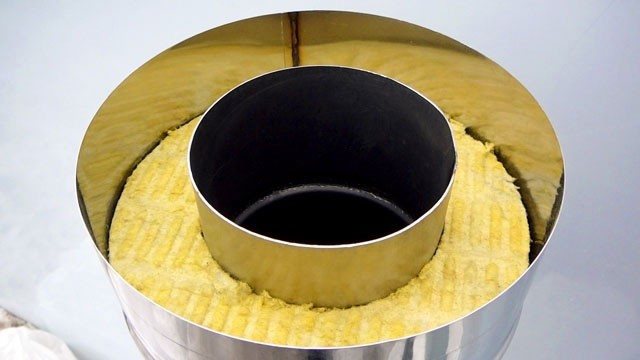

Important: if you do not know how to insulate the chimney from the attic side, use mineral wool panels.
Honeycomb types
Cellular non-combustible materials resemble solidified foam in structure. This type of insulation can withstand high temperatures.
Foam glass
Insulation of an inorganic type with a cellular structure similar to soap foam. The base is crushed glass, which is mixed with carbohydrate. Foam glass has the following positive characteristics:
- environmentally friendly, durable;
- resistant to fire and temperatures;
- does not absorb moisture and does not allow steam to pass through;
- not susceptible to acids, bacteria, fungi, does not attract rodents.
Foam glass can be used in almost any industry - construction, chemical, energy, engineering industries. The only drawback is the high price.


This material is especially recommended for the insulation of basement walls.
Polyurethane foam as a non-combustible material has a serious list of qualities:
- when exposed to an open fire, it does not emit harmful substances;
- low moisture absorption coefficient (1.5%);
- not afraid of temperature changes and mechanical stress;
- copes well with tightness and thermal protection.
This convenient and easy-to-install material is used to insulate saunas, baths and other objects.
The main task of heat insulation materials for ovens
The most important aspect when using stoves and fireplaces is fire safety. The structural element responsible for this requirement is high temperature insulation. Saving on it can lead to serious consequences.
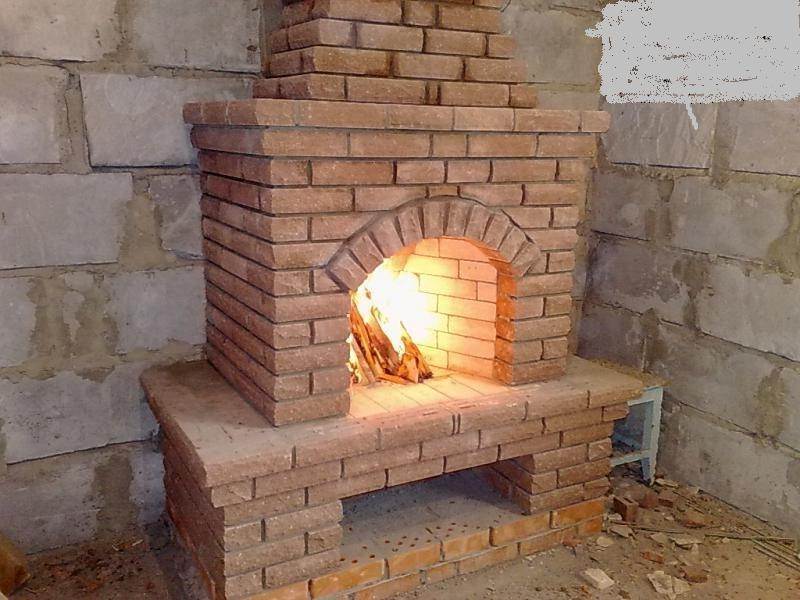

Installation work can be done by hand, but it is recommended that such a question be entrusted to qualified specialists. The construction services market is full of similar offers. The choice must be approached extremely meticulously and strictly, because human lives ultimately depend on the quality of work. Companies with an impeccable reputation are preferred. Guest workers or small fly-by-night firms with low prices should not be involved in such important work.
Right choice
The choice is based on the scope of the insulation. So, basalt wool is relevant for insulation of roofs, walls, ceilings and facades, as fire protection for ventilation and building structures, pipelines, baths and saunas. Foam glass is an excellent non-combustible insulation for a chimney, it is appropriate to use it for insulating roofs, walls, ceilings and fire retardant structures.
If there is a desire to insulate an apartment with foam glass, then you need an L-shaped bracket, an anchor, which will help to fix the layer of blocks on the plastered wall (ceiling). Fiberglass is applicable for insulating attics, roofs, walls, floors along logs, partitions and interfloor ceilings, saunas and baths, walls behind radiators of central heating systems.
A little about brands
The most famous manufacturers of non-combustible insulation are such companies as Rockwool, Ursa GEO, Technonikol, Light Butts.
How to insulate brick pipes
If you do not know how to insulate a brick chimney, we suggest using one of the following options:
- Application of plaster. This option is one of the simplest, fastest, most effective and affordable. The plaster must be applied to the pre-installed reinforcing mesh. In total, it is necessary to apply from 2 to 5 layers, depending on the thickness of the bricks. The total thickness of the plaster must be more than 50 millimeters. After the solution has completely dried, it must be carefully wiped off and applied to the surface with 1-2 layers of chalk or lime paint;
- Mineral wool:
- On the inside of the pipe, a crate made of a metal profile is fixed;
- It is necessary to securely fix each guide with dowels;
- Insulation can be purchased both in rolls and tiled. The first option is the most convenient;
- Basalt wool must be fixed between the gratings. In this case, it is necessary to completely eliminate the occurrence of gaps;
- The next layer is to lay the vapor barrier;
- A plaster grid is fixed, on which several layers of plaster are applied, in which cement should be present.
Thus, you can be one of the most convenient and suitable ways to insulate a brick chimney.
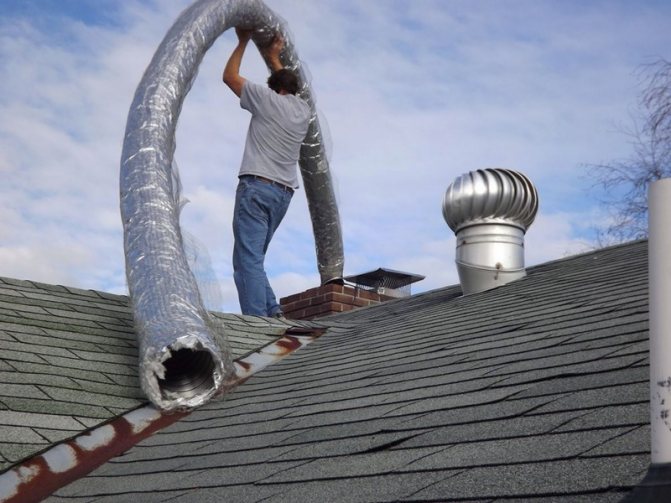

Chimney installation and insulation with non-combustible materials
Chimney installation and insulation with non-combustible materials
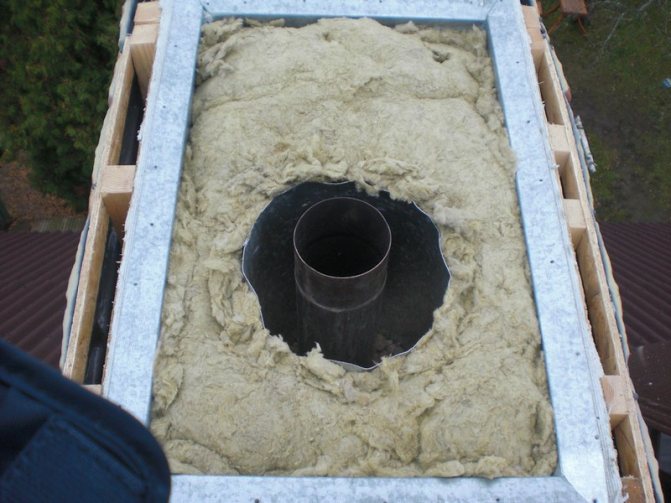

Chimney winding and insulation
Chimney winding and insulation
Types of basalt insulation for thermal insulation of chimneys
In solid fuel fireplaces, the temperature of the gases removed from the furnace does not exceed 400-450 ° C. The temperature inside the decorative structure (box) is noticeably lower, but it can reach 100 ° C. And this circumstance must not be overlooked. In order not to damage the drywall. prevent it from overheating, and also so that, in turn, the finish (plaster, paint, etc.) does not heat up or deteriorate.
Inside the decorative noro-6a, an insulating circuit is installed. It provides reliable heat insulation (you can touch the outer parts of the fireplace without fear), and warm air from the inner part of the box enters the room through the holes provided for this purpose. In addition, non-combustible insulation acts as an additional fire shield.
If the fireplace is supposed to be installed near a wall or in the corner of a room, then thermal insulation plates are also mounted on all adjacent surfaces. They will protect the structure of the house from overheating, accidental sparks and fire. At the same time, a greater amount of hot air will be retained inside the firebox, and then distributed throughout the room, increasing the efficiency of the fireplace.
Many private developers often overlook the fact that in the product line of every major manufacturer of stone wool insulation materials for different purposes are presented.
Despite the external similarity, they have a different composition of raw materials and have different characteristics.
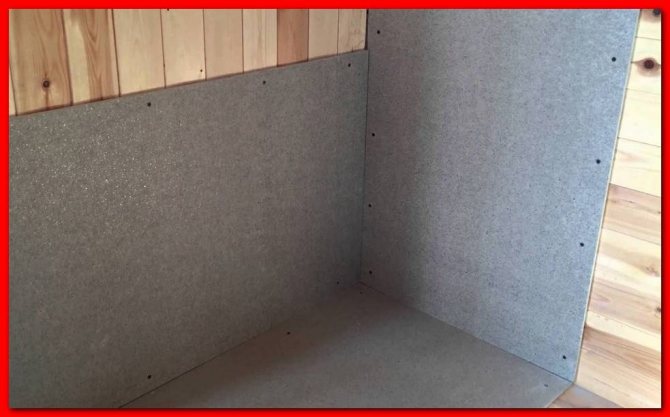

If for general construction insulation the operating temperature range varies from about -50 to 100 ° C, then specialized products, say, intended for work in a high-temperature environment (in the immediate vicinity of fireplaces, stoves, heating equipment), are designed for other loads, and the temperature of the insulated surface they can range from -180 to 750 "C. The choice of such materials should be approached more thoughtfully, since ordinary insulation at elevated temperatures will be ineffective.
In addition, we recommend using high density products for this purpose (at least 80 kg / m3), as they better insulate heat at high temperatures.
The main advantages of heaters
Insulation for the chimney pipe has the following advantages:
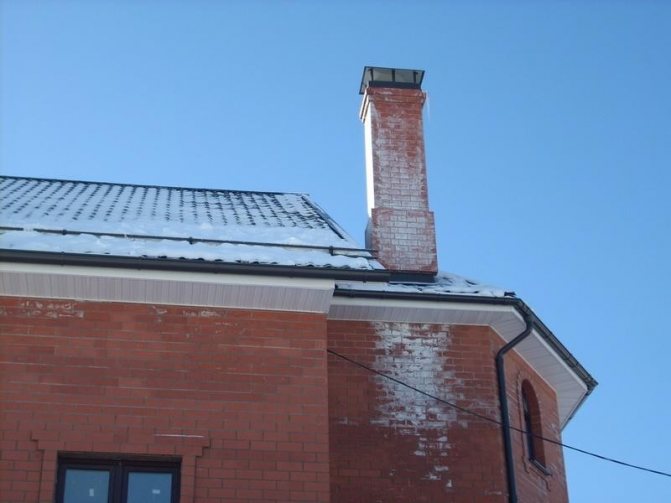

The walls are reliably protected from the ingress of condensate on the surface, which does not allow moisture to accumulate. All combustion products come out together with the smoke.


As a result of thermal insulation, hot air and cooled walls do not create sudden changes.
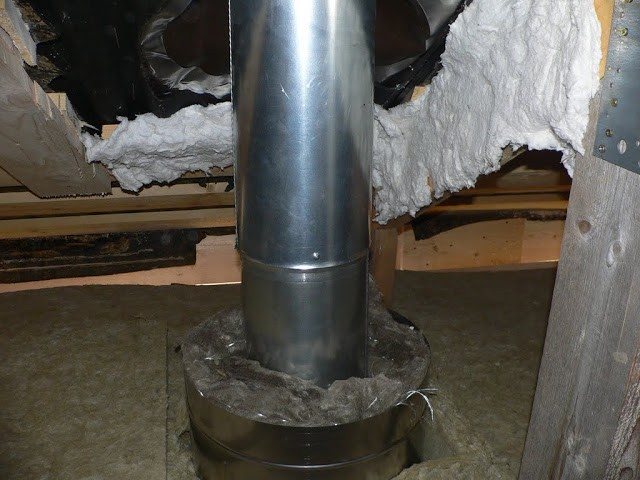

Insulated pipes retain and retain heat for a long time, which allows you to profitably save consumer resources.
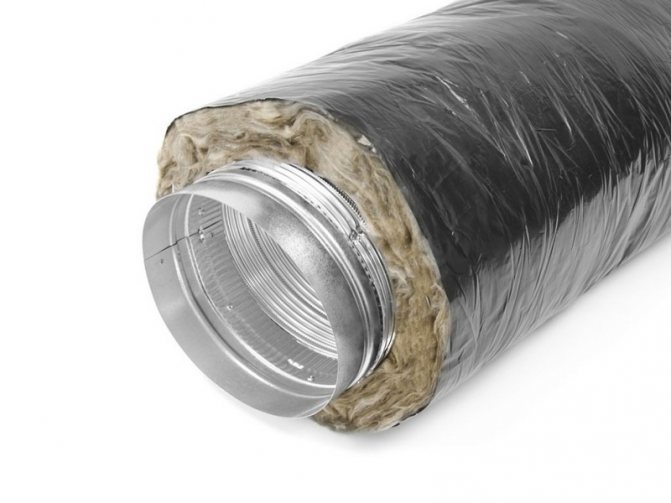

The design becomes more robust and reliable. The likelihood of various destructions and damage caused by environmental influences is excluded.
Important: insulated pipes tolerate frost well and retain all their characteristics and original appearance for a long time.
You can find out how to properly carry out insulation by watching the video in this article.
Where is fire resistant thermal insulation used?
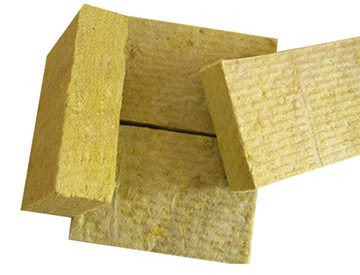

Despite the fact that most of the high-temperature insulation is used for one purpose, their area of application varies. So some can be used in the construction of large buildings and industrial facilities, while others are suitable only for insulating a bath or pipes.
The most widespread is basalt wool. Most often it is used for thermal insulation of external facades. The great advantage is that it can be used both for exterior and interior decoration. Because the material has all the necessary technical characteristics for this.
Mineral wool is also in great demand for summer cottages, however, it has slightly worse technical characteristics that do not allow it to be used with any insulation. But unlike the previous version, it has greater elasticity, which allows it to be installed in complex shapes.
Some people buy fireproof insulation for insulating non-residential premises or attics. Here, experts recommend using bulk materials, they are more suitable for this.
To produce high-temperature insulation in places with a high humidity, it is necessary to select a moisture-resistant and vapor barrier insulation. It will be best if this product is stone wool.
Basalt wool is used to insulate living rooms. But besides her, you can use roll form factor mineral wool for insulating floors or wooden structures.


